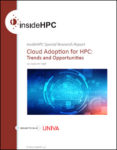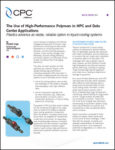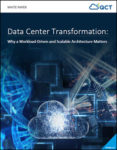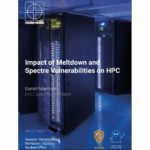This whitepaper contains a compelling HPC data storage solution case study highlighting the use of Panasas ActivStor by Magseis Fairfield, a geophysics firm that specializes in providing seismic 3D and 4D data acquisition services to exploration and production (E&P) companies.
Magseis Fairfield Uses a Sea of Data to Support Environmentally Responsible Energy Exploration
Panasas ActiveStor Solution: Architectural Overview
Our friends over at Panasas have released this timely new white paper “Panasas ActiveStor Solution: Architectural Overview.” The Panasas ActiveStor architecture running the PanFS storage operating system breaks through the performance constraints of other parallel file systems.
The GigaIO™ FabreX™ Network – New Frontiers in Networking For Big Data
In order to derive meaning from big data, via implementing the capabilities of big data analytics, and create new opportunities and new value, organizations must find a way to obtain radically increased overall system throughput. This whitepaper describes how the GigaIO FabreX network makes such accelerated functionalities possible by achieving exceptionally low latency and high-bandwidth performance across an organization’s entire network.
Cloud Adoption for HPC: Trends and Opportunities
This whitepaper is an insideHPC Special Research Report sponsored by Univa® Corporation: Cloud Adoption for HPC:
Trends and Opportunities. Recently, InsideHPC ran a survey, sponsored by Univa, to identify the trends and opportunities for adoption of HPC workflows in the cloud. There were 143 respondents: 39% academic/non-profit, 17% manufacturing or engineering, 11% government research; 59% North America, 24% Europe, 8% Asia; 59% with less than 20,000 employees. This whitepaper is a summary of what was learned from this survey.
The Use of High-Performance Polymers in HPC and Data Center Applications
This whitepaper from CPC details the use of high-performance polymers in HPC and data center applications where plastics advance as a viable, reliable option in liquid cooling systems. CPC offers the industry’s first PPSU QD, purpose-built for liquid cooling use in HPC and data centers.
Data Center Transformation: Why a Workload-Driven and Scalable Architecture Matters
In this whitepaper QCT (Quanta Cloud Technology) highlights Data Center Transformation: Why a Workload-Driven and Scalable Architecture Matters. The company is offering its QCT Platform on Demand (QCT POD) solution that empowers enterprises to kickstart their transformation journey. It combines advanced technology with a unique user experience to help enterprises reach better performance and gain more insights. With flexibility and scalability, QCT POD enables enterprises to address a broader range of HPC, Deep Learning, and Data Analytic demands that fulfill various applications.
Cryptocurrency Supercomputing: Top 30 of Cryptocurrency Mining
Dr. Stephen Perrenod from OrionX has published this First Edition of his biannual list of top cryptocurrency mining pools. In the world of Cryptocurrency Supercomputing, this report looks at this new specialized form of supercomputing known as cryptocurrency mining.
Critical Liquid Cooling Considerations in Electronics
As data centers and high performance computing continue to drive demand for higher densities and increased efficiency, liquid cooling is expanding as a method of thermal management. Download the new white paper from CPC that provides a technical guide for connectors when considering a liquid cooling system for your HPC and data center environments.
LiquidCool Solutions Technical Evaluation
LiquidCool Solutions has developed a liquid submerged server (LSS) technology that changes the way computer electronics are cooled. The technology provides an option to cool electronics by the direct contact flow of dielectric fluid (coolant) into a sealed enclosure housing all the electronics of a single server. The intimate dielectric fluid contact with electronics improves the effectiveness of heat removal from the electronics.
Impact of Meltdown and Spectre Vulnerabilities on HPC
“Performance is important in high performance computing. A performance impact on HPC use can be more than a simple annoyance. Because of the high investment cost and energy usage of HPC systems, a performance impact can have a signi cant effect on price per compute job. As we have discussed in the previous sections, the “page table isolation” workarounds have an overhead on entering and leaving the kernel. Luck happens that in HPC, computers spend most of their time in user space, doing computations. Low-latency networks such as In niband allow HPC systems to perform network communication without involving the kernel. Therefore during HPC computations, the Linux kernel might not be actively involved and the CPUs are running at full power.”












